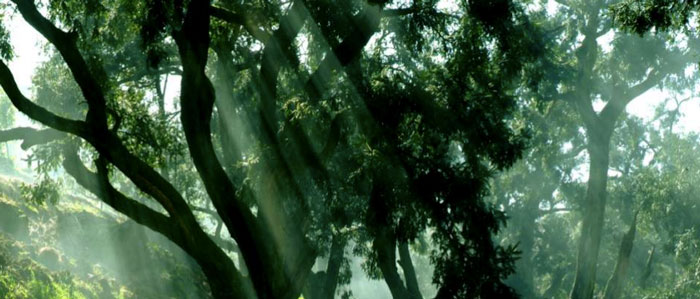Kuaijishan Ancient Chinese Torreya, China
GIAHS since 2013

Site location: Shaoxing City, Zhejiang Province, P.R . China
Area of GIAHS: 402 Km2
Population working for this system: 68 000 people
Topological Characteristics: mountain forest ecological zone
Climatic Classification: Subtropical monsoon climate
Ethnic Groups/Indigenous People: The majority population is Han (97%), and 25 ethnic minorities such as Hui, Manchu, Mongolian, Korean, Zhuang, Tujia occupy 3% of the population; however the population of three villages is Han.
Primary Income Sources: Han (98.15%); Minorities (1.85%)
----------------------------------------------------------------------------------------
Global importance
Chinese Torreya is a quality grafting plant resulting over time from careful artificial selection. The Kuaiji mountain is the origin place of Chinese Torreya with the most well preserved ancient Torreya community, and more than 80% Chinese Torreya production is from this area. According to research, the Kuaijishan region contains over ten types of Chinese Torreya. With more than 2000 years of history, the ancient Chinese Torreya trees, some of which are more than 1000 years old, form a spectacular landscape merged with the traditional villages, abundant streams, and mountains.
The Kuaijishan Ancient Chinese Torreya Community is facing severe threats and challenges due to natural aging, natural disasters, land use competition, population aging, and the lack of agriculture labor resources. It is urgent to establish the social, economic and ecological values of this important system and protect them in dynamic ways.
Food and livelihood security
Thanks to Torreya communities, with the price of 170 Yuan per kg, the total value of Torreya production was 437 million Yuan. In Dongbaihu and Zhaojiazhen villages of Zhuji city, the average annual income per capita of Torreya alone can reach over 8000 Yuan, which accounts for over 80% of the annual income per capita. Moreover, Kuaijishan has been using Torreya for ship building, coffin making, and house beams.
In addition, Kuaijishan Ancient Chinese Torreya Community mainly produces such as Chinese Torreya, cherries, bamboo shoots, chestnuts, melon seeds, grapes, sweet potato, and mountain Yunwu tea, etc. During the East Jin Dynasty, the bookshelves and desks built in Kuaijishan were cherished by scholars such as Wang Xizhi.
Biodiversity and ecosystem functions
First of all China has three Torreya species known as Chinese Torreya tree, Bashan Torreya, and long-leaf Torreya, The Kuaijishan region contains over ten varieties of Chinese Torreya. As an agrosystem, several crops are cultivated within Torreya communities such as rice, corn, wheat, barley, potato, and beans. There are also oil crops, including peanuts, rapeseed, and sesame and important cash crops, including tea, chestnuts, dried bamboo shoots, Chinese tallow trees and mushrooms.
The Kuaijishan Ancient Chinese Torreya Community plays an irreplaceable role in maintaining biodiversity, ecological balance and environmental protection. The region is mainly covered by Torreya grandis forest, coniferous forest, and Mao bamboo forest, with some evergreen broad-leaved forest. The combination of these plants forms well-forested vegetation and maintains a relatively complete forest ecological system and considerable biodiversity.
Studies have shown Torreya grandis forest is associated with the lowest level of erosion. This forest also has the function of water resource conservation, which reflect in three ways: canopy interception, water conserving ability of defoliated leaves and soil water reservation ability.
Knowledge systems and adapted technologies
The traditional Torreya grafting period is between late February and early April, since temperature is beginning to increase and the roots of plants are more active, which increasing chance of successful grafting. High position grafting is the most common technique among the traditional grafting practices. To ensure safety, people often use regular ladders or a local tool, known as the "centipede ladder", to climb up the trees.
Chinese Torreya has been cultivated through long periods of artificial selection and grafting wild Torreya. At the same time farmers have built fish scale pits and terrace fields around the Torreya forest for the cultivation of tea, food crops, vegetables, and pasture, which formed a unique agro-ecological production system.
Traditional processing technology of Chinese Torreya includes 11 stages: stacking, peeling, washing, drying, stir frying, removing from heat, soaking, draining, baking, cooling, and picking. All procedures are done manually.
Cultures, value systems and social organizations
The Torreya farmers of Kuaijishan extend this culture by inheriting traditional ideas and practices in organizing village activities, sacrifices and holiday festivals. Through the inheritance of Torreya culture, the social history and cultural memories such as family values, local history and social rituals are blended together and remembered as a whole, which leads to the formation of social identity and cultural consciousness.
Family is the basic social unit, and kinship is the foundation of the social structure. As the society develops, this family-based social structure is gradually transforming.
Remarkable landscapes, land and water resources management features
Being planted and cultivated with mixed crops and terraces, this system is unique and has shaped the landscape of many villages in the region.
Moreover, due to the distribution of the Torreya communities is in steep areas, soil and water conservation is an important topic in ancient tree management. The farmers of Kuaijishan use terrace or build bamboo fences and piles of stones for fish-scale pits on steep hills to prevent erosion. Terraces built with stone piles have become a unique natural landscape feature in Kuaijishan.

